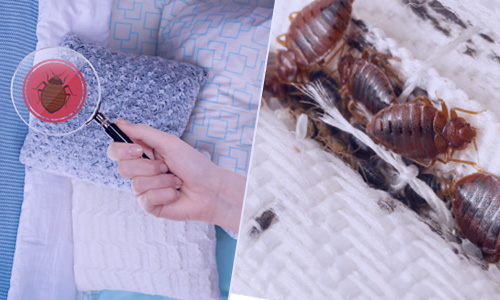Bed bugs are one of the most invasive and irritating pests in the world. They have become a real menace to homeowners and property owners alike. These stubborn insects can spread quickly and cause immense damage to our properties, thus making them a severe health hazard. However, with the latest pest-control technology advancements, hope is on the horizon. Heat treatment is quickly becoming the most prevalent bed bug control method, and in this blog post, we’ll be exploring how it works and the biology of bed bugs.
When we think of bed bugs, most associate them with the creepy crawly insects that infest our mattresses and wreak havoc on our skin. But did you know that bed bugs have been around for centuries, and they have developed some great survival strategies to ensure their longevity? In this blog, we’ll delve deeper into the nature of bed bugs, and you’ll realize that this pest control problem is much more than just an annoyance.

Bed bugs and their nature
The nature of bed bugs is more than just a pest control problem. It’s a fascinating insight into these creatures’ resilience, adaptability, and prolific mechanisms. To effectively eliminate bed bugs from your home, it’s imperative to seek the help of a professional pest control service, but some opt for DIY and mostly fail. By learning more about bed bugs’ unique biology and survival strategies, we can gain a deeper appreciation for these pests and work towards finding innovative solutions to combat them. So next time you spot a bed bug in your home, remember there’s more to these critters than meets the eye.
First, it’s essential to acknowledge that they are resilient. They can withstand extreme temperatures, from cold to scorching hot, so that they can survive in most climates. They are also masters at hiding, able to squeeze into the tiniest crevices, making it challenging to spot and get rid of them. This is why it’s crucial to enlist the help of a professional pest control service to eliminate bed bugs from your home effectively.
Another fascinating aspect of bed bugs’ nature is their ability to adapt. They have evolved to become immune to certain insecticides, rendering those treatments useless. This is why pest control companies must adopt new strategies to combat bed bugs, including heat treatments and specific chemicals targeting bed bugs’ unique biology.
Meanwhile, bed bugs are also prolific breeders. Female bed bugs can lay up to five eggs daily, and their lifespan ranges from four to six months. If you have a few bed bugs lurking in your home, it won’t take long for them to turn into a full-blown infestation.
Furthermore, bed bugs have an uncanny ability to sense when their environment is no longer safe, which prompts them to move to new areas of your home, spreading the infestation even further.
Lastly, bed bugs are parasites requiring a host blood source to survive. They feed on the blood of warm-blooded animals like humans, birds, and mammals and use their sharp mouthparts to pierce the skin and suck blood. Nocturnal insects hide in dark crevices and furniture during the day, making it hard to find and control them. They can survive for months without feeding, and as such, traditional pest control methods are ineffective. However, heat treatment is the most reliable and effective solution.

Bed bugs and heat treatment
Heat treatment involves exposing the infected areas to high heat in the range of 135-145°F. This temperature range is lethal to all stages of bed bugs, from eggs to adult bugs. It works by penetrating every nook and cranny where bed bugs hide. The high temperature also dehydrates the bugs, causing them to die due to lack of moisture. This process is an eco-friendly and chemical-free solution that guarantees complete bed bug eradication.

Heat treatment advantages
One significant advantage of heat treatment over other methods is its ability to kill bed bug eggs. Bed bug eggs are resistant to most pesticides and can take up to 14 days to hatch. With heat treatment, the high temperature penetrates the eggs’ hard shells, killing them. This makes heat treatment the only effective method of eliminating bed bugs for good.
To ensure success, the heat treatment process needs to be done right. It requires certified professionals who have experience in conducting the process. They use specialized equipment to monitor and maintain the necessary temperature levels. The treatment process can take a few hours, and given the safety concerns, it should be done by professionals.

Ask the pros!
Bed bugs have become problematic, especially for property owners and homeowners. These pests are stubborn and resistant to most pesticides. But with the advancements in pest control technology, you no longer have to worry. Heat treatment is the most effective and efficient solution for eradicating bed bugs. It’s environmentally friendly, chemical-free, and kills all stages of bed bugs, including eggs. If you have a bed bug infestation in your home, contact a professional for heat treatment in San Francisco. You won’t regret it.

